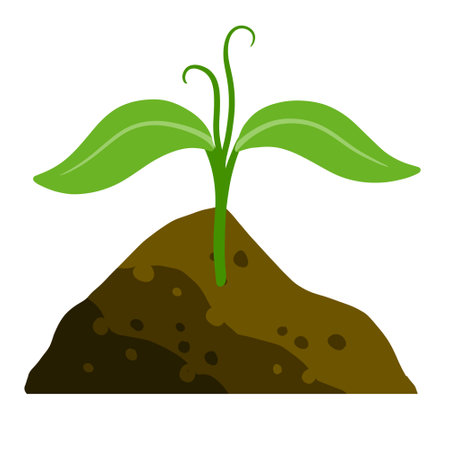Understanding the Importance of Water Conservation
Across the United States, water conservation in backyard gardens has become more than just a trend—its a necessity shaped by environmental realities and shifting climate patterns. Many regions, from California’s sun-drenched coastlines to the prairies of Texas, face recurring droughts that place tremendous pressure on local water supplies. Gardeners are uniquely positioned to make a difference, as residential irrigation accounts for a significant portion of overall water use in American communities. By embracing efficient irrigation practices, we not only help preserve this precious resource but also contribute to a landscape that thrives sustainably. Conserving water reduces runoff, limits soil erosion, and supports resilient native plantings that are naturally adapted to local conditions. Ultimately, every drop saved in our backyards is an investment in the health and beauty of our shared environment—a commitment to stewardship that echoes across neighborhoods and generations.
Assessing Your Garden’s Water Needs
Before installing any irrigation system, it’s essential to understand the unique water requirements of your backyard garden. This evaluation starts with a close look at four main factors: soil type, plant selection, local climate, and your yard’s microclimates. By carefully assessing each, you can create an irrigation plan that minimizes waste and keeps your landscape lush.
Soil Type Matters
The foundation of water-efficient gardening begins with knowing your soil. Sandy soils drain quickly but need more frequent watering, while clay soils retain moisture longer but may cause root rot if overwatered. Loam offers a balanced blend of drainage and retention. Here’s a quick reference:
| Soil Type | Water Retention | Irrigation Approach |
|---|---|---|
| Sandy | Poor | Frequent, shorter cycles |
| Clay | High | Less frequent, deeper watering |
| Loam | Balanced | Moderate frequency and depth |
Plant Selection for Conservation
Your choice of plants greatly influences water use. Native species and drought-tolerant selections thrive on minimal irrigation once established. Grouping plants with similar water needs—known as hydrozoning—makes targeted watering easier and more efficient.
Local Climate Considerations
The climate zone in your region dictates seasonal rainfall and temperature patterns, which should guide your irrigation schedule. For example, gardens in the Southwest may need supplemental irrigation year-round, while those in the Pacific Northwest can rely more on natural rainfall during cooler months.
Backyard Microclimates
No two backyards are exactly alike. Notice areas shaded by trees or buildings, slopes that drain quickly, or spots exposed to afternoon sun. These microclimates affect how much water different sections of your garden require. Adjust sprinkler heads or drip lines accordingly to avoid overwatering shady zones or underwatering sunny patches.
By thoughtfully evaluating these elements, you’ll set the stage for an efficient irrigation system tailored to your backyard oasis—saving water without sacrificing beauty or bounty.

3. Choosing the Right Irrigation System
When it comes to conserving water in your backyard garden, selecting the appropriate irrigation system is essential. Across the U.S., gardeners often choose between drip lines, soaker hoses, and smart sprinkler systems—each offering unique advantages in water efficiency.
Drip Lines: Precision and Conservation
Drip irrigation is a favorite among American home gardeners who value precision and sustainability. These systems deliver water directly to the base of each plant through a network of tubes and emitters. By targeting root zones, drip lines minimize evaporation and runoff—making them ideal for ornamental borders, vegetable beds, or even container gardens. Not only do they save up to 50% more water compared to traditional sprinklers, but they also reduce weed growth by keeping non-essential areas dry.
Soaker Hoses: Simplicity Meets Effectiveness
Soaker hoses offer a straightforward yet effective way to hydrate your garden beds. Made from porous material, these hoses seep water slowly along their entire length. They are especially well-suited for densely planted flower beds or vegetable rows where consistent soil moisture is key. While not as precise as drip systems, soaker hoses still provide significant water savings over overhead sprinkling by delivering moisture directly at ground level—where your plants need it most.
Smart Sprinkler Systems: Tech-Savvy Water Management
For those who appreciate innovation and convenience, smart sprinkler systems represent the future of American landscape care. These Wi-Fi enabled systems connect with weather forecasts and soil sensors to automatically adjust watering schedules based on rainfall, humidity, and temperature. This high-tech approach eliminates guesswork and prevents overwatering—a major culprit of water waste in suburban lawns across the country.
Making the Best Choice for Your Garden
The best irrigation method depends on your specific garden design, plant types, and local climate. Drip lines are perfect for focused watering; soaker hoses excel in dense plantings; and smart sprinklers shine in larger lawns or mixed-use landscapes. By choosing wisely, you can nurture a vibrant backyard retreat while honoring America’s commitment to resource conservation.
4. Smart Scheduling and Monitoring
Efficient water conservation in your backyard garden goes beyond simply installing the right irrigation system—it’s about using smart technology to ensure every drop counts. With today’s advanced tools, you can automate watering schedules based on real-time weather data, soil moisture levels, and even rainfall predictions. This hands-off approach minimizes waste while keeping your landscape lush and vibrant.
Weather-Based Controllers: The Modern Gardener’s Ally
Weather-based controllers, also known as smart irrigation controllers, automatically adjust watering times according to local weather conditions. These devices use data from nearby weather stations or your own sensors to calculate exactly when your garden needs water—no more guesswork or overwatering during rainy weeks. Many models integrate seamlessly with existing sprinkler systems and are EPA WaterSense certified, making them a sustainable choice for American backyards.
Rain Sensors: Let Nature Do the Work
Rain sensors are a simple addition that make a big impact. Once installed, they detect precipitation and temporarily halt your irrigation schedule whenever it rains. This not only saves water but also prevents root rot and other moisture-related plant issues common in U.S. gardens.
Smartphone Apps: Control at Your Fingertips
Imagine adjusting your garden’s watering schedule from anywhere—at work, on vacation, or while relaxing indoors. Many modern irrigation systems now offer smartphone apps that let you monitor and tweak settings remotely. Some apps provide notifications about system malfunctions or suggest changes based on upcoming weather forecasts. The table below highlights key features of popular smart irrigation tools:
| Tool | Main Function | Benefit |
|---|---|---|
| Weather-Based Controller | Adjusts watering to local weather | Saves water, prevents overwatering |
| Rain Sensor | Pauses irrigation during rainfall | Cuts waste, protects plants |
| Smartphone App | Remote scheduling & monitoring | User-friendly, real-time control |
A Seamless Blend of Tech and Nature
By integrating these smart solutions into your garden design, you’ll create a landscape that thrives on mindful resource use and effortless beauty—an approach perfectly suited to the eco-conscious American homeowner.
5. Enhancing Efficiency with Mulch and Ground Cover
When it comes to conserving water in your backyard garden, thoughtful ground layering can make all the difference. Organic mulches, decorative rock, and native ground covers each play a unique role in retaining moisture and curbing evaporation—a crucial factor for sustainable American landscapes.
The Benefits of Organic Mulch
Organic mulch, such as shredded bark, pine needles, or composted leaves, acts like a natural blanket over your soil. By shading the earth from intense sun and wind, it significantly slows down water loss while keeping roots cool. As it breaks down, mulch enriches the soil with nutrients, creating a vibrant foundation for your plants to thrive with less irrigation.
Decorative Rock: A Stylish Water Saver
For gardeners who value aesthetics and low maintenance, decorative rocks offer an elegant solution. Not only do river stones or gravel suppress weed growth, but they also help retain soil moisture by reducing direct sunlight contact with the ground. In regions facing drought or frequent watering restrictions, this hardscape approach supports both beauty and efficiency in your backyard oasis.
Going Native with Ground Covers
Native ground covers—think creeping thyme, buffalo grass, or wild violets—are tailor-made for local climates across America. These living carpets provide continuous coverage that shades the soil, prevents erosion, and limits evaporation. Once established, native ground covers require minimal supplemental water compared to thirsty turfgrass lawns or exotic plantings.
By blending organic mulches, decorative rock accents, and resilient native ground covers into your garden design, you create a harmonious landscape that celebrates both artistry and resourcefulness. These strategies not only enhance the beauty of your outdoor space but also align with eco-friendly gardening practices embraced across the United States.
6. Routine Maintenance for Long-Term Savings
To truly maximize water conservation in your backyard garden, routine maintenance of your irrigation system is essential. A little attention throughout the growing season goes a long way toward preventing leaks, clogs, and unnecessary water waste.
Inspect Regularly
Set a schedule to walk your garden at least once a month and closely inspect all irrigation components. Look for dripping hoses, pooling water, or soggy soil—these may signal unseen leaks. Early detection keeps repairs simple and prevents costly water bills.
Clear Out Clogs
Sprinkler heads and drip emitters can easily become blocked by dirt, mulch, or minerals in hard water. Check each outlet regularly to ensure water flows freely. Gently clean clogged parts with a soft brush or soak them in vinegar if mineral buildup is visible.
Check for Even Coverage
Poorly aligned sprinklers or emitters can leave patches of your garden parched while overwatering other areas. Run your system and observe the spray patterns; adjust heads so that water is distributed evenly across beds, shrubs, and lawn spaces. This minimizes both waste and plant stress.
Replace Worn Parts Promptly
Rubber washers, gaskets, and tubing naturally wear out under sun and heat. If you notice cracks or brittleness, swap out these parts as soon as possible. Keeping your irrigation system in top shape ensures efficient watering season after season.
Monitor System Timing
If you use timers or smart controllers, review settings monthly as weather changes. Adjust schedules to avoid watering during rainfall or cooler periods when plants need less moisture. This simple step saves gallons of water while supporting healthy plant growth.
By making irrigation maintenance part of your gardening routine, you’ll enjoy a lush landscape that’s both beautiful and sustainable—saving money on utilities while preserving precious resources for future generations.


